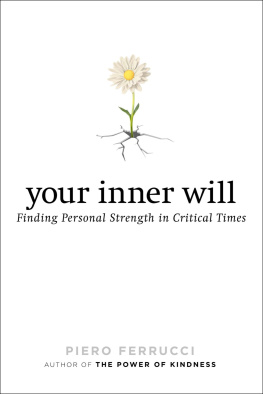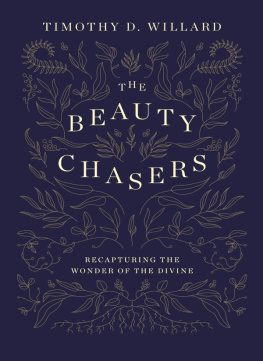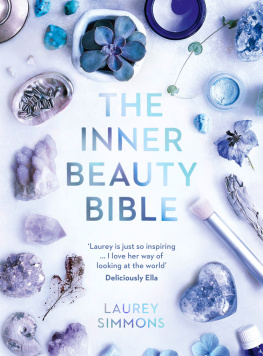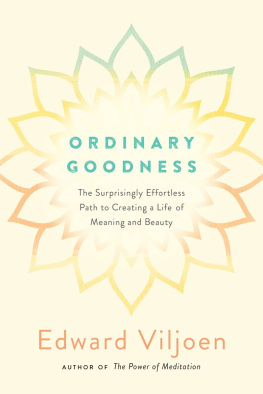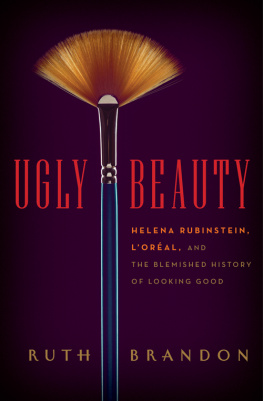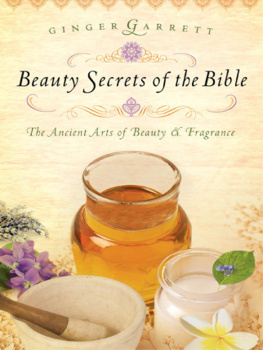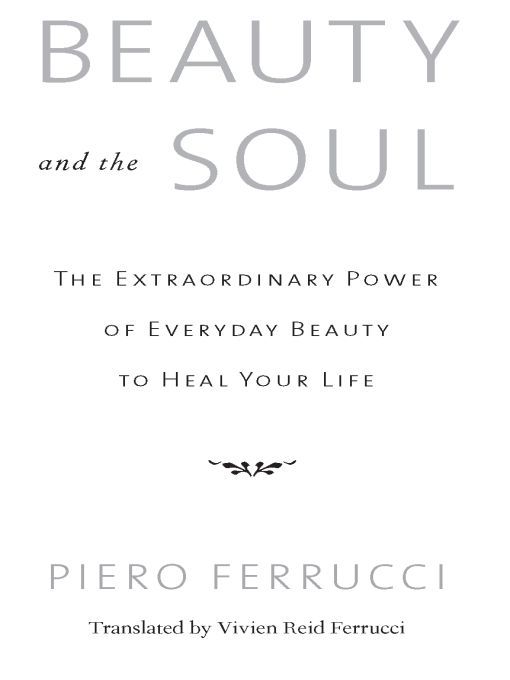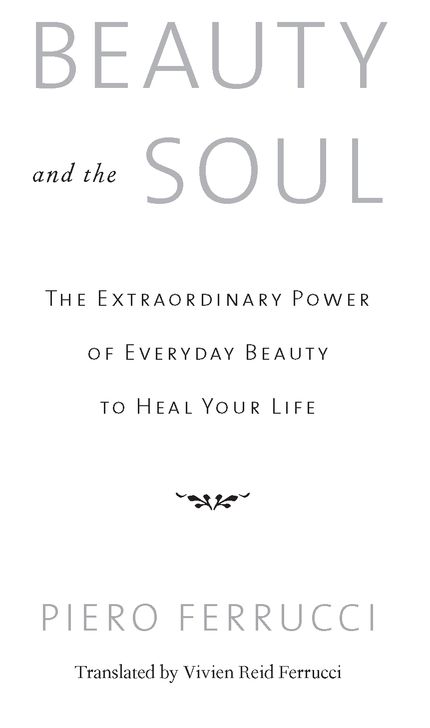Table of Contents
ALSO BY PIERO FERRUCCI
The Power of Kindness
What We May Be
Inevitable Grace
What Our Children Teach Us
The Child of Your Dreams (with Laura Huxley)
JEREMY P. TARCHER/PENGUIN
a member of Penguin Group (USA) Inc.
New York
Acknowledgments
Writing this book has been an inspiring adventure, but not an easy one. It has been a journey into unexpected terrain, where I have at times felt unsure and lost. The subject of beauty is elusive and mysterious. I have done my best. The difficulty in this work is one more reason to be grateful to all who helped me: First, my interviewees, who generously opened the doors to the inner world of their experience; they are both the many I quoted in the text, and the much greater number I did not quote but who were useful anyway. I want to thank my wife, Vivien, who not only translated this text into English, but, in reading the manuscript, gave me lots of valuable suggestions; Linda Michaels, my agent, who encouraged me from the start and, as always, helped me in many ways; and the editors at Tarcher/Penguin, Mitch Horowitz and Gabrielle Moss.
Introduction
Let us start with an African story. Once upon a time there was a normal family: mother, father, children. It was normal in every respect except one: Rather than of flesh and bones, the children were made of wax.
This was a serious problem. The children could never go outside in the sunlight, because if they did, they would melt. They had to live at nighttime and could not see what the world was like. By day they stayed inside a windowless hut, where they were protected from the heat. We will never know what the world is like, they would say. Yet they were good children and got along with one another. Besides, being made of wax, they had the advantage of not feeling pain. If, say, a needle pricked them, they would not even notice.
All went well. But one of them, Ngwabi, was very curious. He wanted to explore the wonders of the world, as he had heard about them and often dreamt of them. He wanted to see the clouds and the sky, the great river, the zebras, lions, and giraffes. He wanted to see the trees moving in the wind and wander in the vast savannas. He was tired of staying at home and just staring at the wall: He wished to see the many faces of beauty.
So one day at dawn he decided to go out and set off on a journey of discovery. Do not go, his parents told him. They were afraid he would melt. Do not go, his brothers and sisters begged him. But out he went, into the light.
His trip did not last long. He managed to see the glory of dawn, the delicate pinks and mauves of the clouds, the cheetahs in their magnificent race. Everything seemed marvelous to him. But shortly the sun came up and beamed more intensely. He began to melt. Soon he was nothing more than a pool of colored wax on the dusty ground.
At nightfall, his brothers and sisters looked for him, found him, and cried. Their tears fell upon the remains of their brother. With their parents, they took the wax and molded it into a bird. They made wings out of palm leaves so the wax would be protected from the sun. Then they put the wax bird on top of a hill near their home, and waited inside their hut, watching through a crack.
At dawn, the wax bird took the color of fire. He seemed to breathe. His eyes opened. He began to fly. His parents, brothers and sisters watched in awe. He was now a noble bird of many colors. He circled once above their heads, as if to greet and thank them. Then he flew away, far away, ready to explore and enjoy, happy at last.
The theme of this story is death and rebirth. At its highest, beauty not only makes us happy: It shakes us, confronts us, transforms us. Its grandeur and intensity can be too much for us as we presently are. Our obsolete beliefs vanish, our timeworn blocks melt. Our old self dies, the new one comes to light.
Sometimes in our life, a door opens. We enter, and a landscape appears in front of usa scene that is new, vaster and more striking than anything we have ever been used to. Before, we were contained in a small, safe place. We did not imagine this door existed. But once we open it, we find bright, beautiful views, hills and valleys, sunlit rivers, mists like embroidery, wide spaces. Our life will never be the same.
Let us imagine a person, say a thirty-year-old woman. She has the usual concerns: her love life, her career, her chances of having a family, how to make ends meet, staying fit, and so on. She is not particularly interested in beauty, in the aesthetic experience. She has too much on her mind.
Then one day, as if by a spell, the door opens for heronto a world whose existence she scarcely suspected. And this woman starts to perceive beauty everywhere, around and inside her: in the shape of clouds, in birdsong, reflections in a puddle, a car-wreck dumped in a field of weeds, an act of unconditional kindness, the adagio of Mozarts K488 piano concerto, the memory of an encounter many years before, an autumn leaf against the sunlight, a brilliantly played goal in a soccer match, a letter expressing gratitude, the magic of dance, the skyline of a big city, the veins of a freshly cut onion, the colors of a landscape at sunset, the sound of waves breaking on the shore, a discolored half-ripped billboard, the hues on a beetle s back, a walk through the streets of town on a clear night, a Rembrandt etching, an elegantly worn garment, mountain air on a summer morning, the perfectly measured words of a poem, the perfume of a flower, Gershwins Summertime, moonlight cast over the countryside, the look in a child s eyes, the patterns on a shell, a dream, the starry sky. Just to mention a few examples.
Now suddenly this person is able to perceive beauty. So the question is: How does her life change? How does our life change when we open to beauty? The answer to that question is the theme of this book.
A Primary Need
Some would say that beauty is an extra because it is not useful or practical and life can go on without it in more or less the same way. I disagree. In our example, we would be dealing with a new person, someone with a different character, a far more intense love of life, an inner world immensely richer and more varied, a more vital connection to feelings, a greater ease in relationship with others, a stronger identity and more solid self-esteem, a greater competence in making choices and moving through everyday life, a deeper understanding of existence.
This is the first vital point in looking at the aesthetic experience. Beauty is not like a distant satellite, but like a sun that gives life and light to all areas of our life. In workshops I conduct on this subject, at the end participants often tell me that they used to think beauty was a specific, occasional experience, like enjoying a painting or a piece of music, but they now see that it is a central factor that concerns all aspects of their existence and goes straight to the heart of who they are.
Benefits
For many years I have been running courses on this subject and dealt with it in psychotherapy sessions. I have also interviewed people on the effects beauty has had on them. In studying the subject, I have cast aside all theoretical preconceptions. As far as possible, I have looked at each experience in an open way, letting it teach me what it had to teach, never using it to prove a point of view. I drew my conclusions afterward.


